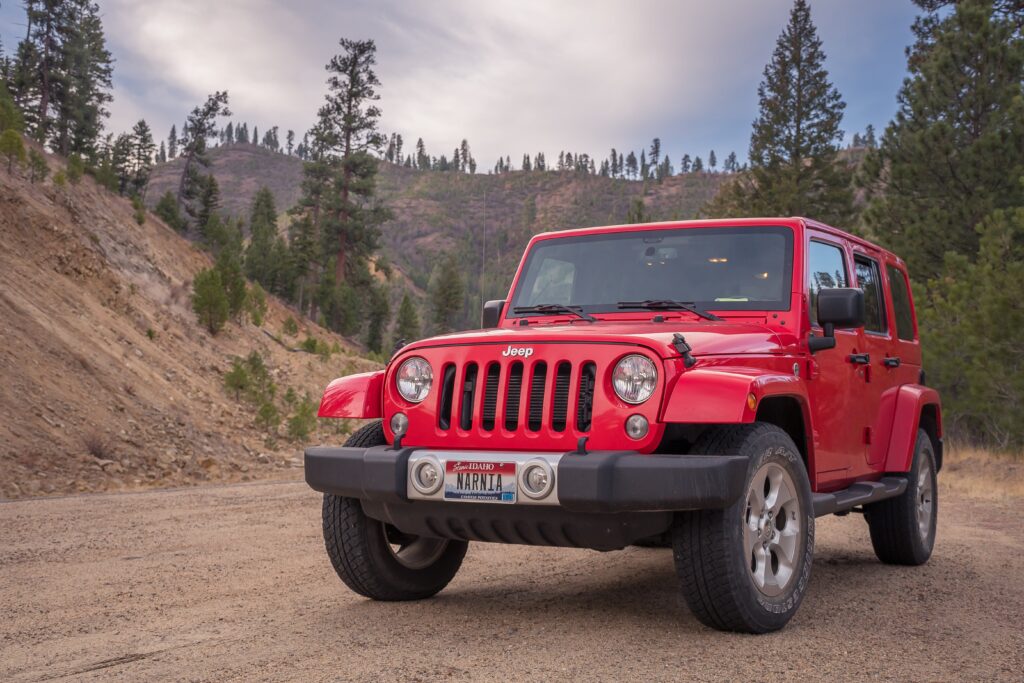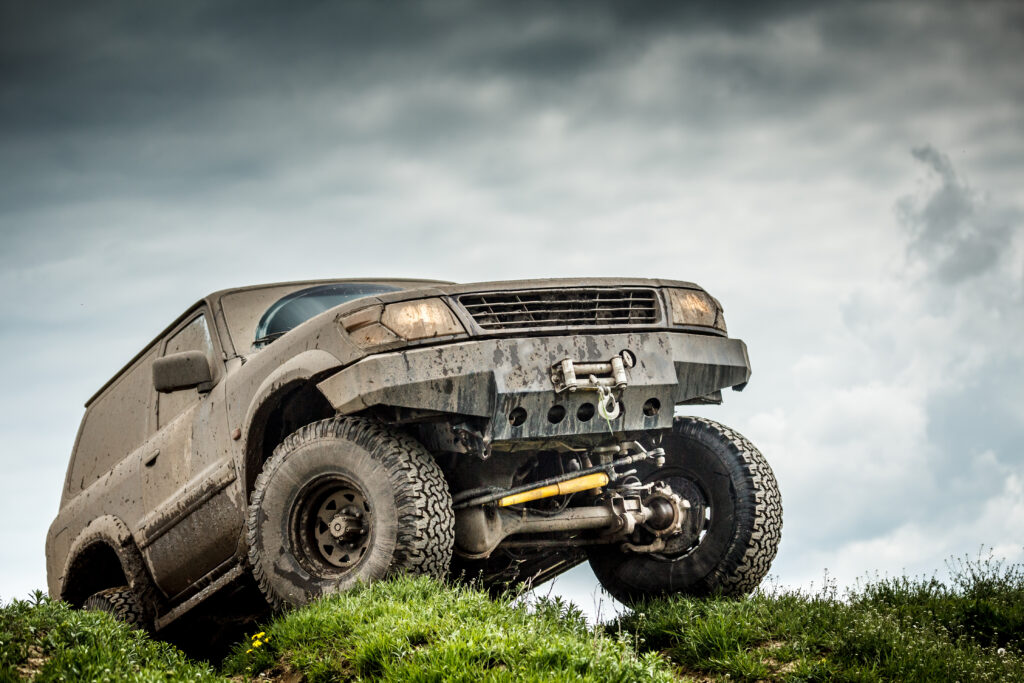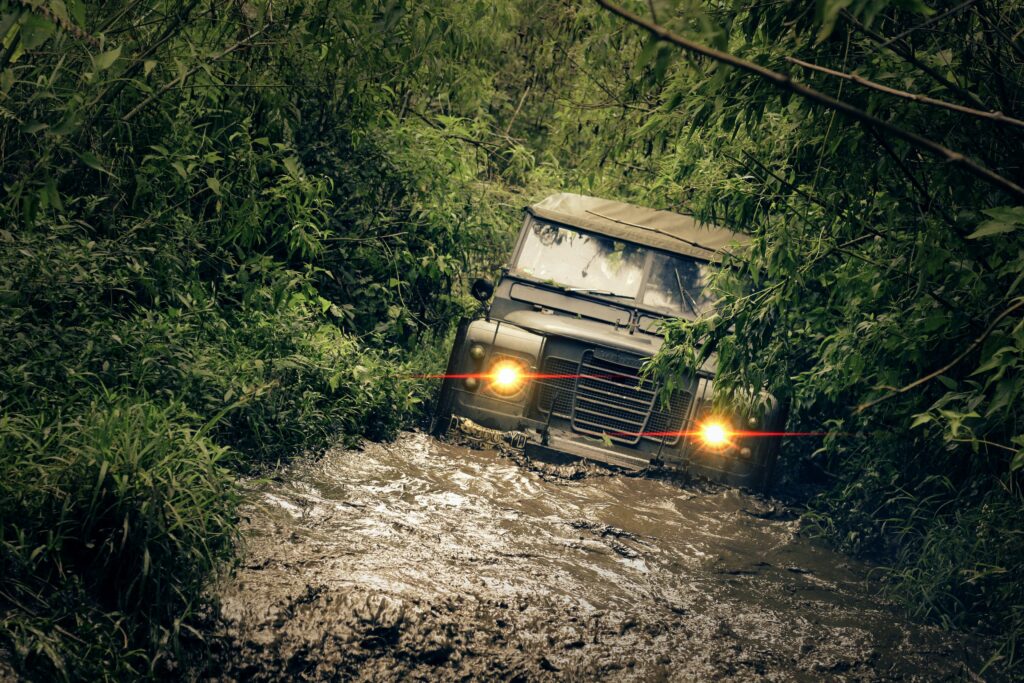
Explaining what an off-road car is and how it’s different from a regular car might seem pointless. You can see the difference with your own eyes, right? But when you start looking for an off-road driving car, you might get lost because you’re not really sure what you actually need. So, if you’re just starting out with off-roading, find out what makes an off-road car special and what to expect from it.
Off-road car – you can see the difference immediately
When you say “off-road car,” you probably think of any car that sits higher off the ground. In other words, compared to a normal car, it has more space underneath. This space is called ground clearance, which is the distance between the lowest point of the car component and the ground. So, the higher you have to lift your leg to get in, the more you’re sure it’s a car made for rough terrain. Just kidding! But seriously, this is the main difference you see right away and for many people, that’s what makes a car an off-road vehicle.
It’s not just a random difference. A car positioned higher means there’s less chance of damaging the oil pan or bumper when driving over obstacles. That’s also why people who love off-roading like to make their cars higher. Regular cars, which might only bump into a high curb, have a fixed clearance usually between 4.3 to 7.5 inches. Off-road cars, on the other hand, usually start at about 5.9 inches and can go up to about 11.8 inches, depending on the brand and model. Plus, they’re ready to be lifted higher and undergo another modifications.

When you imagine off-road cars, you see them as big and heavy vehicles on huge wheels, with lots of extra stuff on them or places to carry things. In the most stereotypical form, there’s a rectangular body mounted on a frame, boxy shape, rugged style and you end up imagining a Jeep Wrangler or something like it. Luckily, reality isn’t so black-and-white.
First impressions can be wrong
In theory, what separates off-road cars from regular ones isn’t visible to the eyes, at least not at first glance. So, experienced off-roaders will tell you that an off-road car, besides its body on a frame, should also have a gear reducer and 4×4 drive. And like every legend, there’s some truth to it. But it’s not the whole truth. If it were, then a Jeep Grand Cherokee with a unibody construction couldn’t be called an off-road car, often seen at off-road events. Not to mention many other SUVs, that are considered more like off-road capable cars than traditionally understood off-road vehicles.
So, a car which has body on frame isn’t necessary. But having four-wheel drive or a gear reducer is worth having in off-roadnig. The biggest challenge for an off-road car isn’t just driving into rough terrain, but getting out of it. After all, you can drive into a field with any car if you’re stubborn enough. But can you get out of a deep track with it? That’s a different story.
Here, the main role is played by four-wheel drive, which makes it easier to move around in terrain. Especially when getting out of sticky situations in muddy area. The gear reducer is also very important because it helps increase the torque to the wheels. This reduces the possibility of losing traction or burning the clutch when starting on mud or sand. You can’t do that in a regular car. But in many SUVs, you can.
The most important things are not visible (until you look under the car)
In the off-road community, people often say that suspension is one of the most important parts of an off-road car. It mainly determines how the car will behave on different roads and in unusual driving conditions. What type of suspension shows it’s an off-road car? Many purists might say only solid axles. But a more important question might be, are you ready for the big changes from driving a regular car to a standard off-road vehicle?
The suspension of a classic off-road car will give you a very different driving experience than a regular car. On the highway and at high speeds, it can be either firmer, causing you to feel more road irregularities under your seat, or softer due to the higher center of gravity, which in turn can make you feel like you’re on a boat. Due to the big tires with deep treads, it will probably be noisier, which can get tiring on a long drive.
Related articles

When you plan to drive mainly on public roads but want to go on tougher terrain sometimes, an SUV with independent suspension seems like a better choice. During a long trip, it’s just as comfortable as you are used to. On top of that, you have possibilities that no regular front-wheel-drive car with much less cargo space can provide.
Off-road car – defined by the terrain
Someone could say that an off-road vehicle is not determined only by its technical specifications but mainly by how it is used. So, it’s the terrain that defines the off-road car, not the specification itself. Sure, specifications and, importantly, your driving skills, will decide where it can go. But, your understanding of “terrain” also depends on your lifestyle or preferred driving style.
Maybe it sounds a bit cheeky, but getting stuck in mud during off-road trips or races is different from a relaxed drive on a forest road and setting up camp in a clearing. In such cases, you probably don’t need an off-road beast on steroids. But a regular car might not be enough either. The final decision, whether to choose a camper, minivan, crossover, SUV, custom car or classic off-roader, depends only on your preferences.
Related articles

Pointing out the solid differences between an off-road vehicle and a car isn’t simple. But the most important and key features are:
- Four-wheel drive,
- Higher-set suspension,
- Suspension’s construction,
- The recommended presence of a gear reducer.
When making your final decision, just be aware of what you expect from a vehicle. Are you looking for something that works for everyday use and occasional trips on light terrain, or for traveling, or for heavy-duty use with no mercy? If you’re still not sure what suits you best, feel free to contact us.






Comments ()